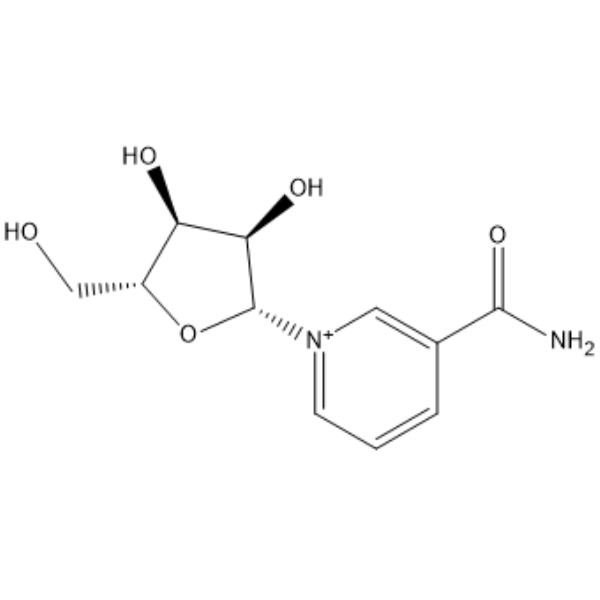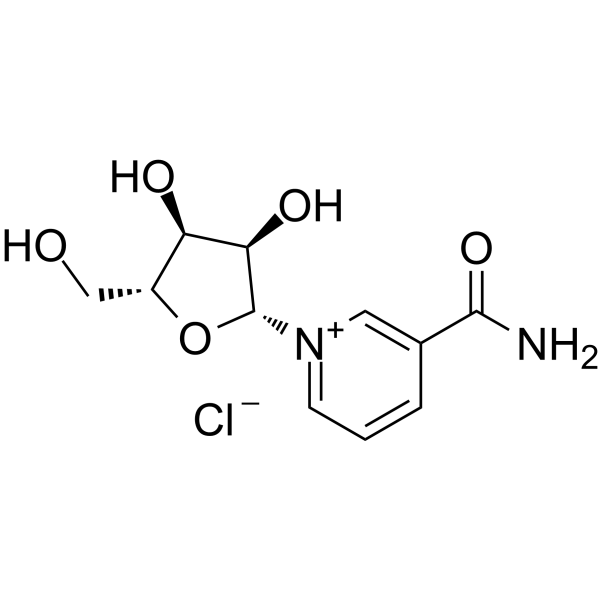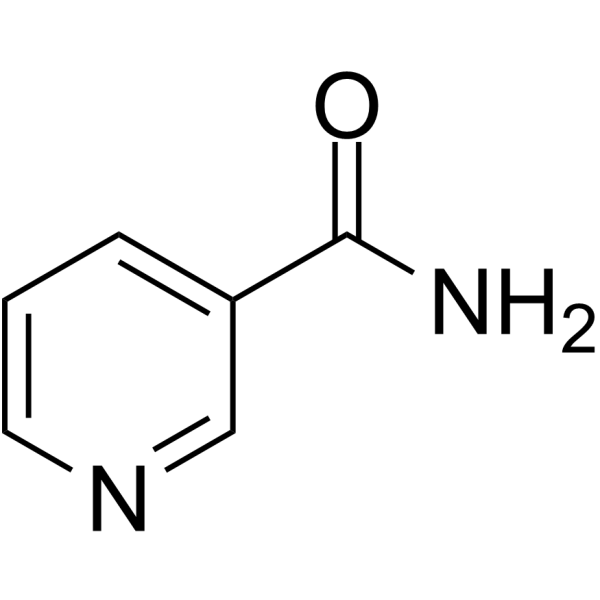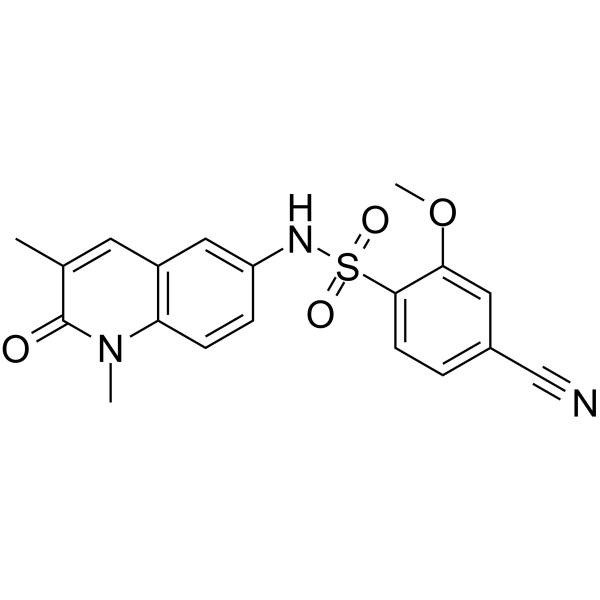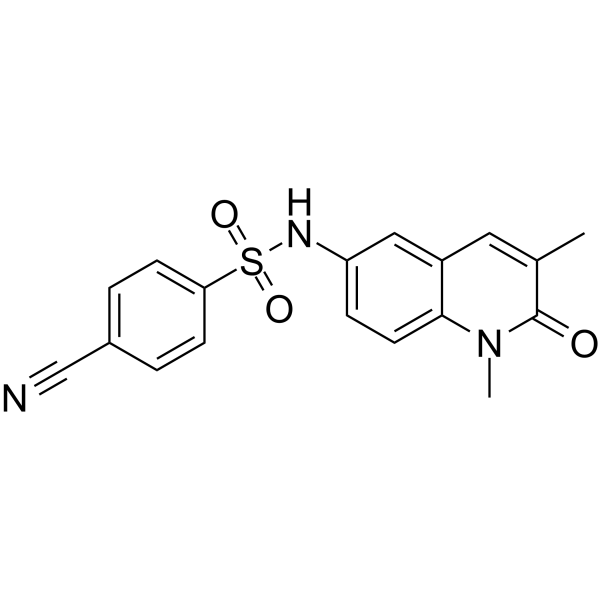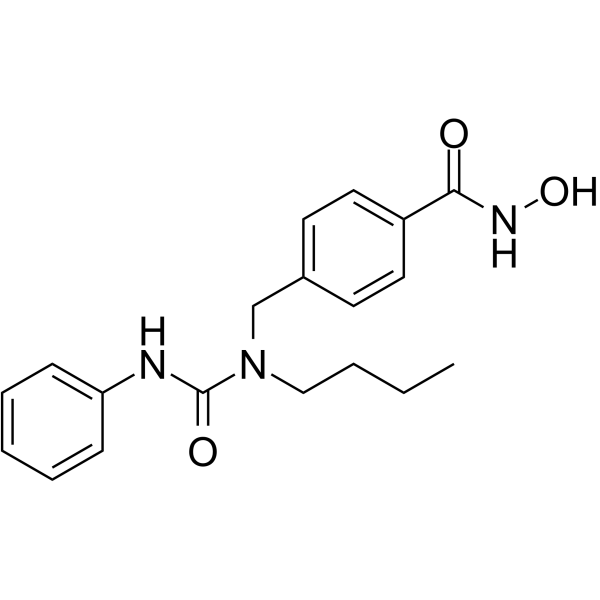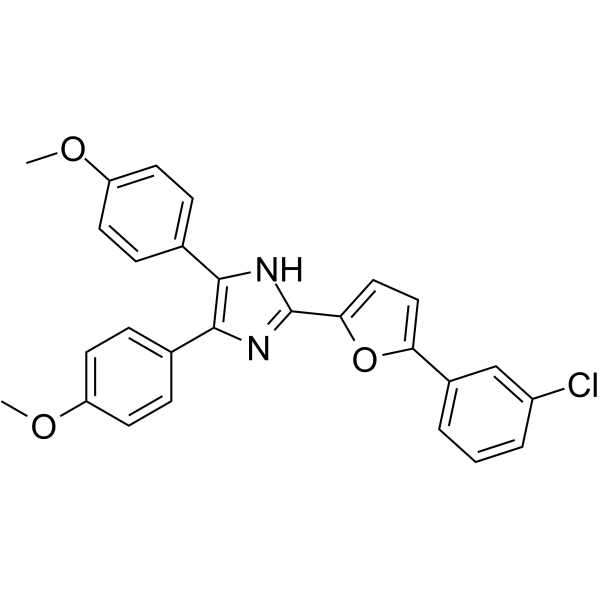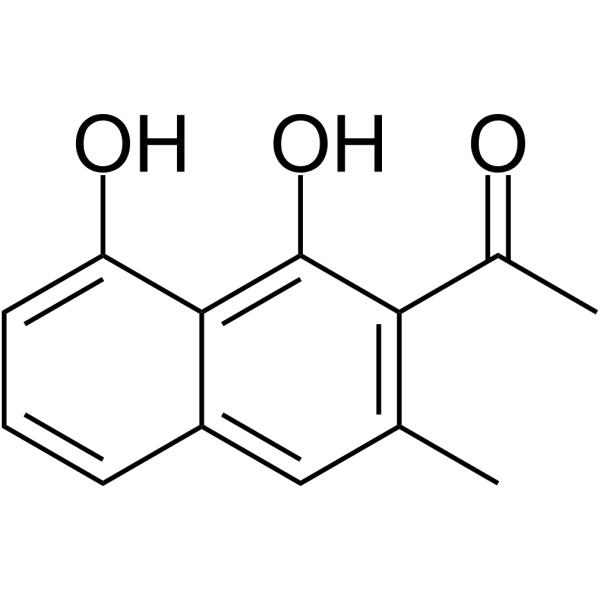|
BP14075
|
OG-L002
|
|
|
|
|
OG-L002 is an effective and selective LSD1 inhibitor (IC50: 20 nM), showing 69- and 36-fold selectivity over MAO-A and MAO-B, respectively.
|
|
BP14074
|
OF-1
|
|
|
|
|
OF-1 is a potent inhibitor of BRPF1B and BRPF2 bromodomain.
|
|
BP14073
|
Oclacitinib
|
|
|
|
|
Oclacitinib(PF03394197) is a potent and selective JAKs inhibitor with IC50 of 10-99 nM; not inhibit a panel of 38 non-JAK kinases (IC50 's > 1000 nM).
|
|
BP14072
|
O-304
|
|
|
|
|
O-304 is a pan-activator of AMP-activated protein kinase (AMPK).
|
|
BP14071
|
NU1025
|
|
|
|
|
NU1025 is a potent PARP inhibitor with IC50 of 400 nM.
|
|
BP14070
|
NSC 3852
|
|
|
|
|
NSC 3852 is a potent inhibitor of histone deacetylase.
|
|
BP14069
|
NP213
|
|
|
|
|
NP213 is a rapidly acting synthetic antimicrobial peptide (AMP). NP213 is effective and well-tolerated in resolving nail fungal infections. NP213 has anti-fungal activities. NP213 targets the fungal cytoplasmic membrane and plays its role via membrane perturbation and disruption.
|
|
BP13624
|
Nootkatone
|
|
|
|
|
Nootkatone can provide effective tick control. (+)-Nootkatone has antiallergic, anti-inflammatory, and antiplatelet activities. Nootkatone can prevent obesity and improve physical performance through AMPK activation in skeletal muscle and liver.
|
|
BP14068
|
NMS-P118
|
|
|
|
|
NMS-P118 is a potent, selective and orally available Inhibitor of PARP-1 for cancer therapy.
|
|
BP14067
|
Niraparib tosylate monohyrate
|
|
|
|
|
Niraparib, also know as MK-4827, is an inhibitor of poly (ADP-ribose) polymerase (PARP) with potential antineoplastic activity. MK4827 inhibits PARP activity, enhancing the accumulation of DNA strand breaks and promoting genomic instability and apoptosis. The PARP family of proteins detect and repair single strand DNA breaks by the base-excision repair (BER) pathway.
|
|
BP14066
|
Niraparib (R-enantiomer)
|
|
|
|
|
Niraparib R-enantiomer is an inhibitor of PARP1(IC50 of 2.4 nM).
|
|
BP14065
|
Nicotinamide riboside
|
|
|
|
|
Nicotinamide riboside increases NAD[+] levels and activates SIRT1 and SIRT3, culminating in enhanced oxidative metabolism and protection against high fat diet-induced metabolic abnormalities.
|
|
BP14064
|
Nicotinamide riboside chloride
|
|
|
|
|
Nicotinamide riboside chloride, also known as NR and SRT647, is a pyridine-nucleoside form of vitamin B3 that functions as a precursor to nicotinamide adenine dinucleotide or NAD+.
|
|
BP14063
|
Nicotinamide
|
|
|
|
|
Niacinamide is an important compound functioning as a component of the coenzyme NAD. Its primary significance is in the prevention and/or cure of blacktongue and PELLAGRA. Most animals cannot manufacture this compound in amounts sufficient to prevent nutritional deficiency and it therefore must be supplemented through dietary intake.
|
|
BP14062
|
NI-57
|
|
|
|
|
NI-57 is an inhibitor of proteins of bromodomain and plant homeodomain finger-containing (BRPF) family, with IC50s of 3.1, 46 and 140 nM for BRPF1, BRPF2 (BRD1) and BRPF3, respectively.
|
|
BP14061
|
NI-42
|
|
|
|
|
NI-42 is a structurally orthogonal chemical probe for the BRPFs and is biased. It effective inhibitor of the BRD of the BRPFs (IC50s of BRPF1/2/3=7.9/48/260 nM; Kds of BRPF1/2/3=40/210/940 nM). It also has excellent selectivity over nonclass IV BRD proteins.
|
|
BP14060
|
Nexturastat A
|
|
|
|
|
Nexturastat A is an effective and specific HDAC6 inhibitor (IC50: 5 nM). Its selectivity is >190-fold than other HDACs.
|
|
BP14059
|
Neuropathiazol
|
|
|
|
|
Neuropathiazol is a synthetic small molecule. It also causes neuronal differentiation of adult hippocampal neural progenitor cells.
|
|
BP14058
|
Neurodazine
|
|
|
|
|
Neurodazine is an imidazole-based small molecule, serves as a promoter of neurogenesisin pluripotent cells. Neurodazine selectively inhibits astrocyte differentiation of P19 cells. Neurodazine promotes neurogenesis by activating Wnt and Shh signaling pathways.
|
|
BP14057
|
Nepodin
|
|
|
|
|
Nepodin has antimalarial, and anti-inflammatory activities, it shows significant cyclooxygenase (COX) inhibitory activity. Nepodin has an antidiabetic effect, which is at least partly mediated by stimulation of GLUT4 translocation via AMPK activation by nepodin.
|
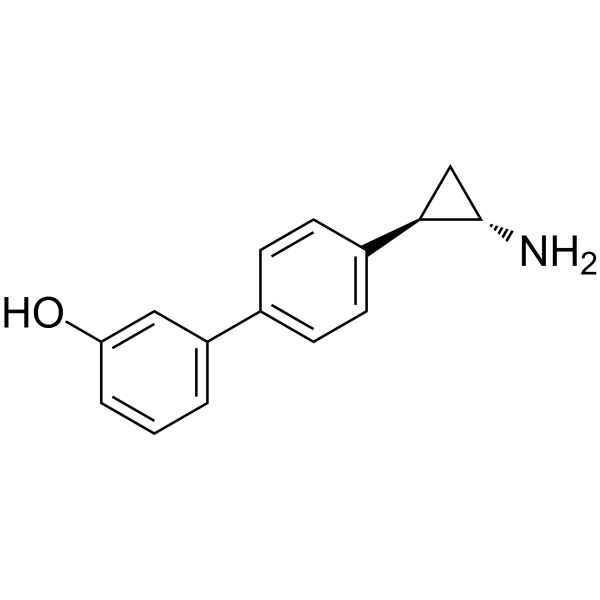
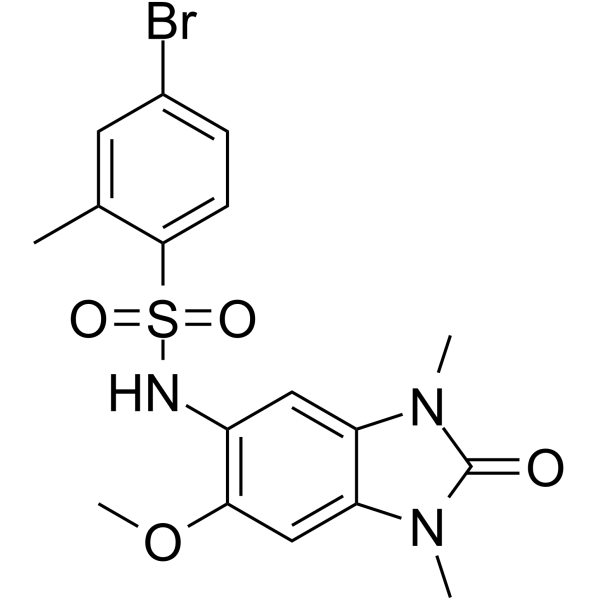

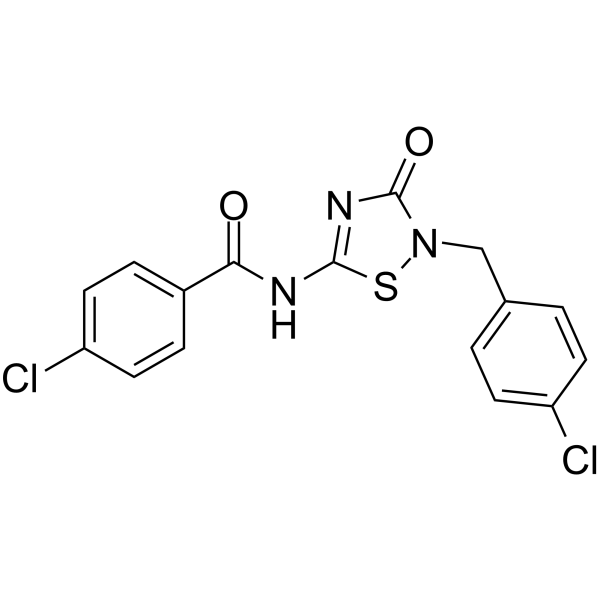
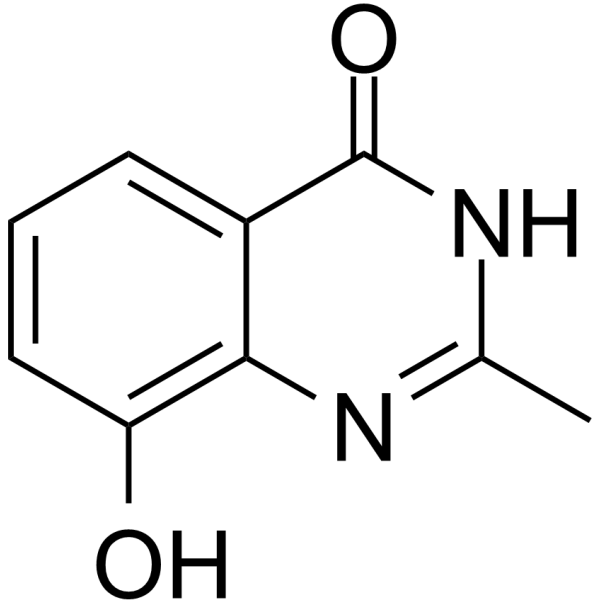


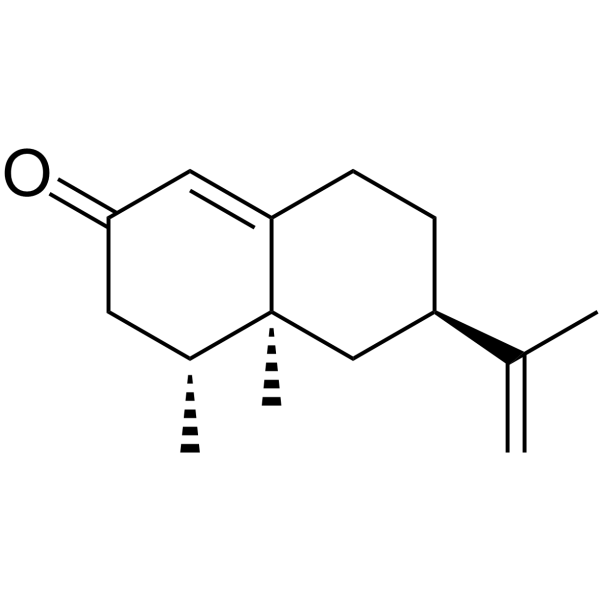
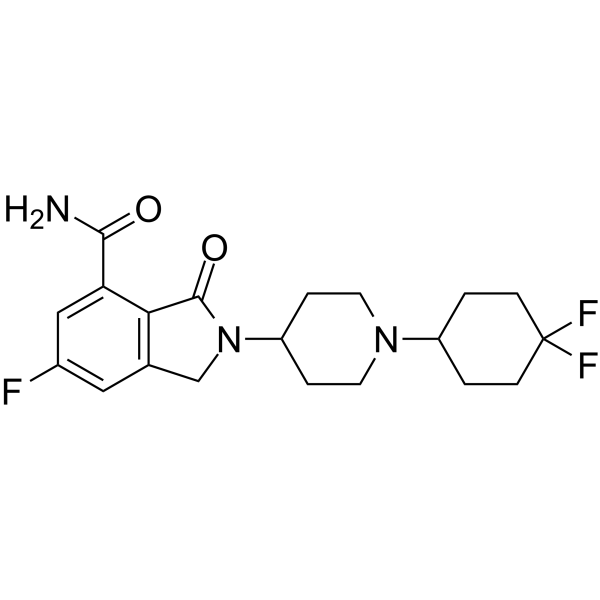

.gif)
